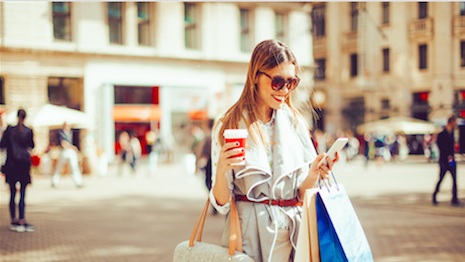- About
- Subscribe Now
- New York,
March 31, 2017

 Luxury consumers respond more to backstage content and fashion shows when it comes to video
Luxury consumers respond more to backstage content and fashion shows when it comes to video
While luxury has always relied on a sense of mystery and avant-garde aesthetic, a new report from OMD EMEA and Tubular Labs shows that it is real, accessible content that is driving 74 percent of all luxury video engagement.
This does not mean that luxury brands must drop the high-concept films and advertising. The data only shows that luxury brands must supplement that with content that gives customers access to the luxury world in the form of fashion shows and behind-the-scenes footage which sees the most engagement from consumers.
"Global economic shifts and technological disruption are clearly redefining the rules of luxury marketing," said Blake Cuthbert, chief digital officer of OMD EMEA, London. "Five years ago, the luxury industry was reluctant to be social, fearing the visibility would devalue their proposition.
"However, in recent years, big luxury brands are in an arms race to build their luxury social currency tapping into what people crave. Today it is the real content – fashion shows, montages and behind-the-brand access – that is driving 74 percent of all luxury video engagements.
"Brands also need to harness the power of digital content. There is an opportunity for luxury brands to deliver content solutions dynamically, serving more relevant videos based on data such as age, interest and behavior."
Accessible content
Luxury has long embraced video as a flexible marketing tool, useful for all sorts of promotions from teasing new collections, familiarizing consumers with themes of the season, showcasing celebrity endorsements and a variety of other tactics.
For the most part, this has been a big success, with many consumers lapping up luxury video in large numbers.
But beneath the surface, there are some interesting interactions going on between the type of content produced and how likely it is to inspire engagement. While many brands like to use video to tease new products with coy or opaque marketing campaigns, it is actually the more direct and accessible content that drives the most engagement.
Consumers are also skeptical of influencer marketing
"OMD EMEA and Tubular Labs looked at the data and found that 74 percent of luxury video engagement went to accessible, behind-the-scenes videos or footage from an actual fashion show," Mr. Cuthbert said. "This signals that consumers do not necessarily want more avant-garde video content, they just want more access to the brand.
"Looking specifically at the luxury watch category, as expected 73 per cent of YouTube engagement is driven by those under the age of 34, who are mainly luxury owners in waiting," he said. "Perhaps surprising, luxury watch videos are also generating 18 per cent of their engagements from those over 55 years old, which is 14 times the YouTube average.
"Nevertheless, how these audiences engage with luxury watch video content is different. Those under 35 years old focus on beauty and entertainment influencers, concentrating on how luxury brands make them look."
The influencer relationship
The other area that the report focused on is influencer marketing, and particularly how consumers feel about the relationship between luxury brands and influencers, who are a major part of the modern luxury marketing model.
Influencers are not just selling how-to videos or product recommendations, they are also selling a lifestyle.
This aspect of emulation is a unique strength of luxury and one that is perfectly suited to influencer marketing (see story).
Some of the top luxury influencers
But as influencers become more and more integrated into brands’ marketing models, it becomes increasingly difficult for consumers to tell where one ends and the other begins.
“The new influencer authority is authenticity and originality. As tempting as it is to seed products for visibility, luxury brands need to be selective," OMD EMEA's Mr. Cuthbert said. "The rapid adoption of influencer strategies for categories from FMCG to luxury automobiles has also left consumers more skeptical of the true relationship between brands and influencers.
“For luxury brands it is not about volume, it is about the right contextual fit, originality and innovation which an influencer partnership can generate," Mr. Cuthbert said. "Despite the niche nature of luxury, brands still need to produce content for the masses.
“By utilizing popular themes, events and culture, brands can create a universal understanding to build brand desire and convert demand.”
Share your thoughts. Click here